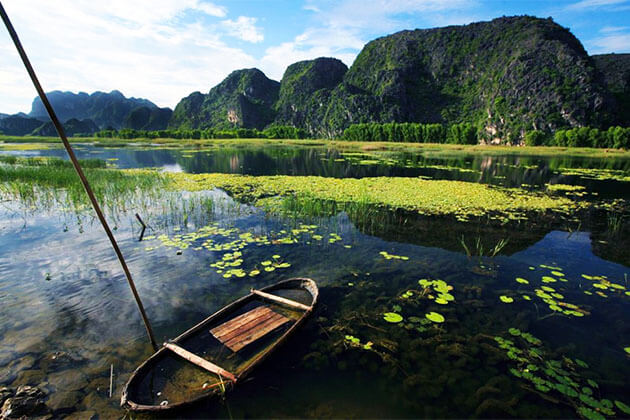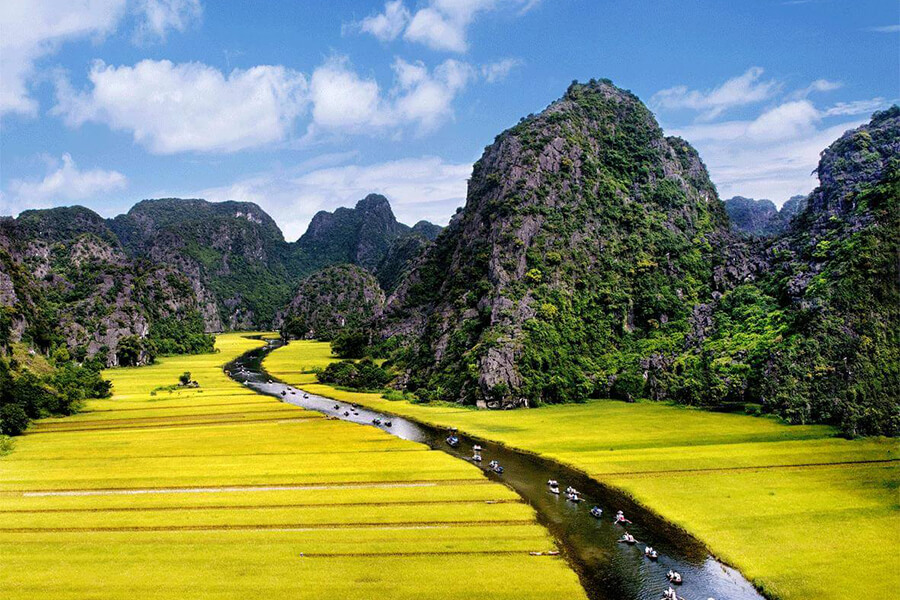Situated in Ninh Binh Province – 95 km Southwest of Hanoi, the Van Long Wetland Nature Reserve has been recognized as the ninth Ramsar site of Vietnam on the 22nd May 2019 after receiving its certificate of recognition at a ceremony. This recognition can help Vietnam to call for international support to reserve, converse and sustain the wetland eco-system facing challenges from global climate change. Engaging with a reputable Vietnam travel agency can provide valuable insights and assistance for those looking to explore and appreciate the ecological significance of Van Long Wetland Nature Reserve as part of their Vietnam tour.
In addition, its special location on the northernmost tip of the Pu Luong - Cuc Phuong limestone mountain range has made the area one of the few intact lowland inland wetland areas remaining in the Red River Delta. Van Long is centered on a block of limestone karst outcrops rising from the flat coastal plain of northern Vietnam. The freshwater lake, marshes and swamps surrounding the karst and the subterranean hydrological systems form this wetland complex that is very rare in the region. The limestone hills are home to the endangered Delacour’s langur - one of the world’s 25 most endangered primates. Van Long is also an important refuge and breeding ground for several aquatic species, and home to waterbirds.

The Convention of Wetlands – Ramsar is an intergovernmental treaty providing a framework for conservation and wise use of wetlands and their resources. The treaty was adopted in the Iranian city of Ramsar in 1971 and in 1975 it came into force.



